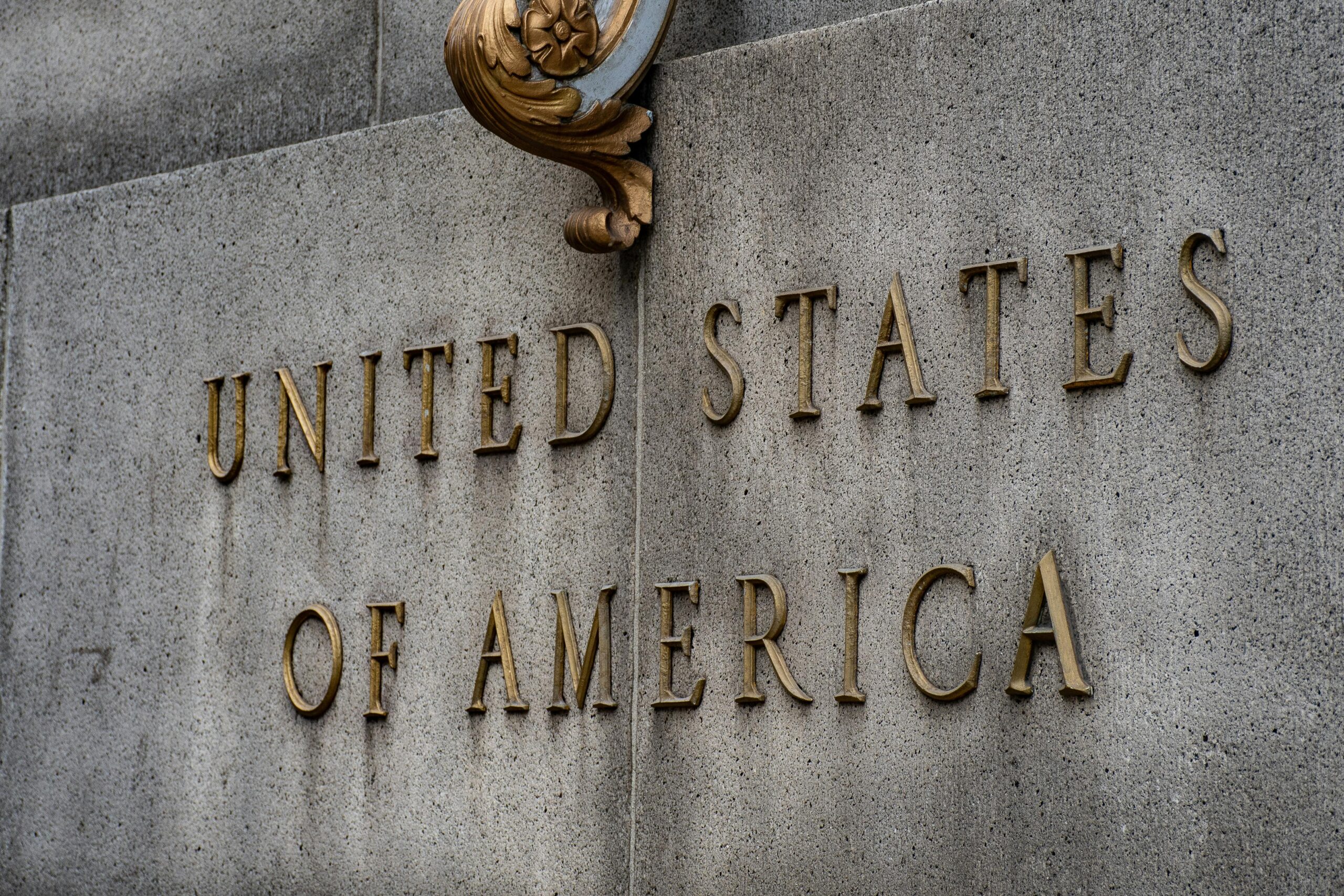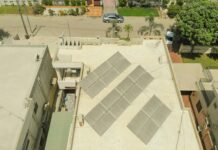When it comes to understanding the National Iron Price in Pakistan, many people wonder – what’s really driving the market? In this article, we dive deep into the factors influencing the fluctuating prices of iron across Pakistan, uncovering the hidden dynamics behind this essential commodity. Whether you are a business owner, investor, or simply curious about the current iron rates in Pakistan, this comprehensive guide will reveal the secrets you need to know to stay ahead in the market.
The national iron price in Pakistan is not just a number; it reflects a complex interplay of global and local influences. From increasing demand in the construction sector to the impact of international supply chain disruptions, these factors collectively shape the pricing trends. Have you ever asked yourself why iron prices seem to spike unexpectedly? Or how government policies and import duties affect the iron market? This article explores all these burning questions and more, offering insights that can help you make informed decisions.
In recent years, the iron market in Pakistan has witnessed significant volatility, driven by economic shifts, currency fluctuations, and the evolving infrastructure projects nationwide. By understanding the key drivers of the national iron price in Pakistan, you can unlock opportunities to maximize profits or secure better deals on your iron purchases. Stay tuned as we unpack the latest trends, expert forecasts, and actionable tips to navigate the ever-changing landscape of iron pricing in Pakistan. Don’t miss out on this essential knowledge that could transform how you view the iron market today!
Top 5 Factors Influencing National Iron Price in Pakistan: What Every Buyer Must Know
The national iron price in Pakistan has always been a topic of great interest for buyers, suppliers, and industry experts alike. In recent years, the fluctuations in iron prices have created uncertainty in the market, making it hard for construction companies, manufacturers, and consumers to plan their budgets accurately. To understand why the iron price is moving the way it does, one must dive into the various factors influencing this essential commodity. This article explores the top 5 factors influencing national iron price in Pakistan and what every buyer must know before making a purchase decision.
1. Global Raw Material Costs
One of the biggest influences on the national iron price in Pakistan is the cost of raw materials on the global market. Iron ore, scrap metal, and coal are the primary raw materials used in iron production. When their prices increase internationally, local producers in Pakistan face higher production costs, which eventually gets passed on to consumers.
For example:
- Iron ore prices have seen a dramatic rise in the past decade due to increased demand from countries like China and India.
- Supply chain disruptions caused by geopolitical tensions or pandemics also cause raw material prices to spike.
- If the cost of importing these raw materials goes up, Pakistani iron manufacturers raise their prices to maintain profitability.
Because Pakistan imports a significant portion of its raw materials, fluctuations in the global market directly impact the national iron price.
2. Currency Exchange Rates
Another critical factor affecting the iron price in Pakistan is the exchange rate between the Pakistani Rupee (PKR) and major currencies like the US Dollar. Since most raw materials and machinery used in iron production are imported, a weaker rupee means higher import costs.
Here’s how currency exchange rates influence iron prices:
- When PKR depreciates against the USD, importers pay more rupees for the same amount of raw materials.
- This increase in cost leads to higher production expenses for iron manufacturers.
- To cover these costs, the final price of iron products is raised, causing national iron price in Pakistan to climb.
Historically, sharp fluctuations in PKR/USD exchange rate have caused sudden price increases in the iron market. Buyers often find it difficult to predict prices during times of currency instability.
3. Domestic Demand and Construction Activity
National iron price in Pakistan is also closely tied to domestic demand, especially from the construction sector. Pakistan’s growing population and urbanization have fueled a construction boom, which directly affects iron demand.
Key points related to demand:
- Construction companies require large quantities of iron for building infrastructure, housing, and commercial projects.
- During peak construction seasons, demand rises significantly, pushing iron prices upward.
- Government-led infrastructure projects also create spikes in demand, resulting in higher prices.
For instance, the China-Pakistan Economic Corridor (CPEC) initiative has boosted infrastructure development, increasing iron consumption and influencing market prices. When demand reduces, like during economic slowdowns or political instability, iron prices tend to drop.
4. Production and Energy Costs
The iron industry in Pakistan depends heavily on energy sources such as electricity and fuel. Production costs are highly sensitive to changes in energy prices, which in turn affect iron prices.
Consider the following:
- Pakistan faces frequent power shortages and load shedding, which disrupt production schedules.
- Increased fuel prices raise transportation and manufacturing costs.
- Higher energy expenses force manufacturers to increase the selling price of iron.
For example, if electricity tariffs rise, iron mills pay more for their operations, and this expense eventually shifts to buyers. Energy inefficiency and infrastructure challenges in Pakistan make this factor even more significant.
5. Government Policies and Tariffs
Government regulations, taxes, and tariffs play a pivotal role in shaping the national iron price in Pakistan. Import duties on raw materials, export restrictions, and taxation policies directly impact the cost structure of iron producers.
Important aspects include:
- Import tariffs on iron ore and scrap metal can increase input costs for local manufacturers.
- Export restrictions may limit access to cheaper raw materials from neighboring countries.
- Tax policies and regulatory compliance costs add to the overall price of iron.
For example, if the government imposes high import duties to protect local industries, prices might rise in the short term due to limited supply. Conversely, incentives for local producers can stabilize or reduce prices. Buyers should always monitor policy changes, as sudden government decisions can cause significant market shifts.
A Comparative Overview of Factors Influencing Iron Price
| Factor | Effect on Iron Price | Current Situation in Pakistan |
|---|---|---|
| Global Raw Material Costs | Increase in raw material prices raise iron prices | Rising iron ore prices globally |
| Currency Exchange Rates | Depreciation of PKR leads to higher costs | PKR volatility impacting import costs |
| Domestic Demand | High demand pushes prices up | Construction boom due to urbanization |
| Production and Energy Costs | Higher energy costs increase production price | Frequent power shortages and fuel price hikes |
How Global Market Trends Are Shaping National Iron Price Fluctuations in Pakistan
The national iron price in Pakistan has been a topic of much discussion among builders, investors, and everyday consumers. It is hard to ignore how frequently prices swing, leaving many wondering what causes such fluctuations. While local factors certainly plays a role, the influence of global market trends cannot be underestimated. Understanding these dynamics can helps stakeholders make better decisions in a volatile market.
Global Market Trends Impacting Iron Prices
Iron, being a globally traded commodity, is greatly affected by international forces. When the global demand rises or falls, Pakistan’s iron price usually follows the same pattern, sometimes with a lag. Here are some major global trends influencing iron prices:
- China’s Demand: China, the largest consumer of iron worldwide, heavily influences the market. When Chinese industries boost steel production, the need for iron ore increases, pushing prices up globally. Conversely, slowdowns in China mean less demand and price drops.
- Supply Chain Disruptions: Any interruption in iron ore supply chains, whether due to natural disasters, geopolitical tensions, or pandemics, can cause price volatility. For example, port blockages or strikes in major exporting countries can reduce availability.
- Energy Prices: The cost of energy, especially coal and oil, affects iron production costs. Rising energy prices tend to increase iron prices, as mining and manufacturing become more expensive.
- Currency Fluctuations: Since iron is priced in US dollars, fluctuations in the dollar’s value impact prices in local currencies like the Pakistani Rupee. A weaker rupee can make imported iron more expensive domestically.
National Iron Price In Pakistan: Discover What’s Driving The Market
Pakistan, although having some local iron production, largely depends on imports to meet its demand. This reliance makes the national iron price sensitive to international price changes and currency movements. Additionally, factors specific to Pakistan also shape the market:
- Import Tariffs and Taxes: Government policies on import duties directly affect iron cost. Higher tariffs raise prices for local consumers, while reductions could lower them.
- Transportation Costs: Moving iron from ports to construction sites is costly, and inefficiencies or higher fuel prices increase these expenses, pushing up final prices.
- Demand from Construction Sector: Pakistan’s growing urbanization and infrastructure development require large amounts of iron. Seasonal construction booms often create spikes in demand, which raises prices temporarily.
- Local Production Capacity: The limited capacity of domestic steel mills and iron producers means Pakistan cannot buffer global price shocks effectively. When global prices rise, local prices tend to rise more sharply.
Historical Perspective on Iron Prices in Pakistan
Looking back over the last decade, iron prices in Pakistan show several interesting trends related to global events:
- In 2010-2012, a global commodity boom led to record high iron prices, which created a construction cost surge domestically.
- The 2015-2016 slowdown in China caused a significant drop in iron prices worldwide, and Pakistan also saw a brief period of cheaper iron.
- Recent years have been marked by volatility due to COVID-19 disruptions, supply chain issues, and fluctuating energy costs.
These examples highlight how Pakistan’s iron market does not operate in isolation, but is deeply connected to what happens globally.
Comparison: Pakistan vs Other Major Iron Importers
To better understand Pakistan’s iron pricing, it’s useful to compare with other countries that also depend on imports:
| Country | Dependency on Imports | Price Sensitivity | Local Production Influence |
|---|---|---|---|
| Pakistan | High | Very High | Limited |
| India | Moderate | Medium | Significant |
| Bangladesh | High | High | Limited |
| Turkey | Moderate | Medium | Good |
This table shows Pakistan’s vulnerability to global price swings is among the highest because of its import dependency and limited local production.
Practical Examples of Price Fluctuations
- In early 2023, the rise in global steel demand due to post-pandemic recovery caused iron prices in Pakistan to jump by nearly 20% within months.
- Conversely, a strengthening of the Pakistani Rupee against the US Dollar in mid-2023 temporarily eased prices for local buyers.
- Unexpected port strikes in Karachi delayed shipments and caused short-term price spikes due to supply shortages.
These real-world examples demonstrate how interconnected variables shape the iron market.
What Can Stakeholders Do?
For those involved in construction, manufacturing, or investment, understanding these market forces can help mitigate risks:
- Monitor global commodity news and China’s industrial activity regularly.
- Factor in currency exchange trends when budgeting for iron purchases.
- Advocate for government policies that support local production and reduce import costs.
- Consider bulk purchasing or hedging strategies to protect against price volatility.
The national iron price in Pakistan is a complex puzzle influenced by both international and local factors. While global market trends often set the stage, domestic conditions determine how those trends play out
National Iron Price in Pakistan 2024: Expert Predictions and Price Comparison Insights
National Iron Price in Pakistan 2024: Expert Predictions and Price Comparison Insights
The national iron price in Pakistan has been a hot topic for industry experts, traders, and consumers alike in 2024. Many people wants to understand what exactly drives the fluctuations in iron prices, and how these changes are impacting the construction and manufacturing sectors across the country. Iron, being a fundamental material for infrastructure development, holds a strategic position in Pakistan’s economic growth. But the price moves often leave many confused and uncertain about market conditions and future trends.
What’s Driving The National Iron Price in Pakistan?
There are several factors that play a role in determining the cost of iron in Pakistan. It is not only about local demand and supply but also connected to global market dynamics, political situations, and domestic policies. Experts have pointed out some key variables influencing the iron prices this year:
- Raw Material Costs: The price of iron ore and scrap metal, which are primary raw materials, have seen swings worldwide. Any increase in these commodities automatically pushes iron prices higher in Pakistan.
- Currency Fluctuations: Since iron and steel imports involve foreign exchange, the Pakistani Rupee’s value against the US Dollar significantly affects the final price.
- Government Policies: Import tariffs, taxes, and subsidies related to the steel industry can either ease or tighten the supply chain, influencing market prices.
- Transportation and Fuel Costs: Rising fuel prices or logistical challenges increase the cost of moving iron from mills to markets and construction sites.
- Demand from Construction Sector: Pakistan’s infrastructure projects, housing developments, and industrial expansions create huge demand. When demand spikes, prices usually rise as well.
- Global Market Trends: International iron price trends, especially from key suppliers like China and India, impact Pakistan’s market because of import dependencies.
Historical Context of Iron Prices in Pakistan
Iron prices in Pakistan have never been static. Over the last decade, the market witnessed considerable ups and downs. For instance, during 2016-2018, the prices surged due to increased infrastructure spending and a booming construction industry. However, from 2019 onwards, the prices faced some declines because of global trade tensions and the COVID-19 pandemic disruptions.
In 2023, the prices started to recover as economic activities resumed and government projects gained momentum again. This year, 2024, experts predict a moderate rise but with some volatility because of uncertain global economic conditions. The history of price movements shows how sensitive the iron market is to both domestic and international shocks.
Price Comparison: National Iron Price in Pakistan vs Regional Markets
To understand better where Pakistan stands in terms of iron pricing, it helps to compare it with neighboring countries. The table below provides a snapshot of average iron prices per kilogram in early 2024:
| Country | Average Iron Price (PKR/kg) | Notes |
|---|---|---|
| Pakistan | 230 – 250 | Prices vary by city and quality |
| India | 220 – 240 | Slightly cheaper due to local production |
| China | 200 – 220 | Major exporter, controlling global prices |
| Bangladesh | 240 – 260 | Import dependent, higher transport costs |
| Iran | 210 – 230 | Lower prices due to subsidies |
This comparison shows Pakistan’s iron prices are somewhat higher than China and India but competitive with Bangladesh and Iran. Local factors like taxes, tariffs, and supply chain efficiency cause these differences.
Expert Predictions for National Iron Price in Pakistan 2024
Industry analysts and market watchers have shared varied predictions about iron prices in Pakistan for the remainder of 2024. Here’s a quick summary of their views:
- Moderate Increase Expected: Many experts believe prices will rise by 5-10% due to sustained demand from construction projects and limited supply constraints.
- Volatility Possible: Prices could fluctuate monthly because of global economic uncertainties and currency instability.
- Impact of Government Policies: If new import duties or taxes are introduced, prices might spike sharply in short term.
- Technological Advancements: Adoption of new steel-making technologies locally might reduce production costs and eventually stabilize prices.
- Global Demand Influence: If China or India changes their export policies, Pakistan’s prices will be affected accordingly.
Practical Examples of Iron Price Impact on Industries
The iron price directly affects multiple sectors in Pakistan. Here are some examples:
- Construction Companies: Higher iron prices mean increased building costs, which can delay projects or increase housing prices.
- Manufacturing Units: Industries producing machinery, tools, and vehicles face rising production expenses, impacting product pricing.
- Small Traders and Retailers: They struggle to keep profit margins stable when iron costs fluctuate frequently.
- Government Infrastructure Projects: Budget overruns become common when iron price spikes unexpectedly during ongoing projects.
Tips for Consumers and Businesses to Cope with Iron Price Changes
- Bulk Purchasing: Buying iron in
Why Is the National Iron Price in Pakistan Rising? Key Drivers and Economic Impacts Explained
The national iron price in Pakistan has been climbing steadily over the recent months, leaving many industries and consumers worried about the future costs and economic impact. This rise is not just happen by chance; there are multiple factors behind this trend that affecting the entire market landscape. Understanding why the national iron price in Pakistan rising is important for businesses, construction sectors, and even everyday citizens who indirectly feel the pinch through rising costs of goods and services.
What Factors Are Driving The National Iron Price in Pakistan?
Several key drivers contribute to the increase in iron prices in Pakistan. These factors are both local and global, creating a complex scenario that market watchers and economists try to decode. Here are some of the main reasons:
-
Global Raw Material Price Surge
Pakistan imports a large percentage of its raw materials used in iron production. When the global prices of iron ore and scrap metal rise, it directly impacts the finished product cost. Recently, China, one of the biggest consumers and producers of iron, has increased its demand, pushing prices worldwide higher. -
Currency Depreciation
The Pakistani Rupee has faced depreciation against the US Dollar, which makes imported raw materials more expensive. Businesses involved in iron manufacturing must pay more in local currency, which they pass on to buyers. -
Increased Demand in Construction Sector
Pakistan’s construction industry is booming, especially in urban centers like Karachi, Lahore, and Islamabad. More housing projects and infrastructure developments require more iron, pushing the demand beyond what local production can supply. -
Supply Chain Disruptions
The COVID-19 pandemic and geopolitical tensions have disturbed supply chains. Delays in shipment, increased freight costs, and shortage of skilled labor have all contributed to increased production costs. -
Government Policies and Taxes
New tariffs, taxes, and regulatory changes also add to the cost of iron. Sometimes, import duties or taxes on raw materials are increased to protect local industries but this results in higher prices for consumers.
Historical Context: How Iron Prices Have Changed Over Time
To understand the current price rise, it helps to look back at the iron price trends over the last decade in Pakistan.
- 2010-2015: Prices remained relatively stable, with minor fluctuations due to global market conditions.
- 2016-2019: Moderate price increase as demand grew with urban development and industrial expansion.
- 2020-2021: A sudden drop in demand during the pandemic caused prices to fall temporarily.
- 2022-2024: Sharp increase in prices due to a combination of supply shortages and increased demand.
This historical perspective shows that while price fluctuations are normal, the recent surge is more significant than usual.
Economic Impacts of Rising National Iron Price in Pakistan
The rising cost of iron has wide-reaching effects on the economy, beyond just the metal industry itself. Here are some important impacts:
- Higher Construction Costs: Builders and developers face higher expenses, which eventually lead to increased prices for homes and commercial properties. This could slow down real estate growth.
- Industrial Production: Many industries that use iron as a raw material, such as automobile manufacturing, machinery, and appliances, see their production costs rise, affecting competitiveness.
- Inflation: Increased iron prices contribute to overall inflation, as goods that require metal components become more expensive.
- Employment: While some sectors may see job growth due to increased demand, others might reduce hiring or cut workforce because of higher input costs.
- Consumer Spending: Higher prices of essential goods can reduce consumer purchasing power, affecting the broader economy.
Practical Examples: How The Iron Price Increase Plays Out in Everyday Life
- A construction company in Karachi planning to build a residential complex finds that the cost of steel rods and sheets have gone up by nearly 20% compared to last year. This makes the project budget bigger and may delay the timeline.
- Car manufacturers report that the cost of car bodies and parts, made from iron and steel, is increasing, causing them to raise vehicle prices for consumers.
- Small workshops that produce metal furniture or tools struggle to maintain profit margins without raising prices, sometimes losing customers to cheaper imported alternatives.
Comparison: Pakistan’s Iron Price vs. Neighboring Countries
| Country | Average Iron Price (per ton) | Key Influencing Factors |
|---|---|---|
| Pakistan | PKR 140,000 – 160,000 | Currency depreciation, import reliance |
| India | INR 60,000 – 65,000 | Strong domestic production, government subsidies |
| China | CNY 4,500 – 5,000 | Large-scale production, export controls |
| Iran | IRR 1,200,000 – 1,400,000 | Sanctions affecting supply chains |
This table shows that Pakistan’s
Where to Find the Most Accurate and Updated National Iron Price in Pakistan Online
Finding the most accurate and updated national iron price in Pakistan online can be tricky sometimes, but it’s very important for businesses, contractors, and consumers alike. Iron prices in Pakistan have always been volatile, influenced by many factors such as global demand, local manufacturing capacity, government policies, and even seasonal trends. If you want to keep up with the national iron price in Pakistan, you need to know where to look and what affects the market movements.
Where to Find the Most Reliable National Iron Price in Pakistan Online
Many websites and platforms claim to offer the latest iron prices, but not all of them update their data regularly. Some sources provide delayed information or only regional prices which might not reflect the national average. Here are some common places where you can check:
- Pakistan Steel Mills Official Website: It sometimes shares market updates and price trends for steel and iron products. Though updates are not daily, it’s a reliable source for official data.
- Local Market Aggregator Websites: Websites like PakTradeInfo or MetalPricePK offer daily or weekly updates on iron prices from various cities like Karachi, Lahore, and Islamabad.
- Trading Platforms and B2B Marketplaces: Platforms such as Alibaba and local Pakistani B2B portals include supplier quotes and iron prices that can be quite current.
- News and Business Portals: Leading business news websites in Pakistan regularly publish reports and articles covering the national iron price in Pakistan with expert analysis.
- Social Media Groups and Forums: Some groups on Facebook and WhatsApp dedicated to traders and contractors share price updates in real-time but verifying the info is necessary to avoid misinformation.
What Drives The National Iron Price In Pakistan?
Understanding what drives the iron price in Pakistan helps you predict market trends better, even if you can’t check the price daily. Here’s what influence the iron market:
- Raw Material Costs: Iron ore is the basic raw material, and its price on the international market heavily influences local iron prices. When ore costs rise, local prices follow.
- Currency Fluctuations: Since Pakistan imports a significant amount of iron and steel products, changes in the Pakistani Rupee exchange rate against the US Dollar impact the price.
- Government Taxes and Duties: Import duties, sales taxes, and other tariffs can make iron more expensive or cheaper. Any new government policy often causes price fluctuations.
- Demand and Supply Dynamics: The construction sector is the biggest consumer of iron in Pakistan. A surge in building projects or infrastructure development causes rising iron prices.
- Energy Costs: Manufacturing iron products needs a lot of energy. When electricity or gas prices increase, so do production costs, which eventually affect market prices.
- Global Market Trends: Pakistan’s iron price isn’t isolated. Global steel production, China’s industrial demand, and international trade tensions ripple through local price levels.
Historical Price Trends and Market Behavior
Iron prices in Pakistan have shown significant ups and downs over the past decade. To give a clearer picture, here’s a rough outline of how prices moved in recent years:
| Year | Approximate National Iron Price (per kg in PKR) | Market Notes |
|---|---|---|
| 2015 | 60-70 | Steady demand, local production stable |
| 2017 | 75-85 | Increase due to raw material price hike |
| 2019 | 90-100 | Global steel prices rising, currency depreciation |
| 2021 | 110-130 | Construction boom, import tariff changes |
| 2023 | 120-150 | Inflation and energy cost hikes push prices up |
This simple table shows how multiple factors, from economic to geopolitical, affect the national iron price in Pakistan. It also proves why keeping updated information is a must.
Practical Tips to Track Iron Prices Effectively
If you are involved in buying or selling iron products, following these tips might save you time and money:
- Check prices from multiple sources regularly to avoid relying on outdated or biased information.
- Use mobile apps or subscribe to newsletters of metal price tracking websites for instant updates.
- Pay attention to local market rates in Karachi, Lahore, and other cities, because prices can vary slightly depending on logistics and demand.
- Keep an eye on government announcements related to import policies, taxes, and subsidies, as these directly impact prices.
- Network with local traders and suppliers either online or offline to get insider information and negotiate better deals.
Comparing National Iron Price to Other Metals in Pakistan
Iron is not the only metal affecting industrial and construction sectors. Here’s a quick comparison with other commonly used metals:
| Metal | Average Price Range (PKR/kg) | Primary Use |
|---|---|---|
| Iron | 120-150 | Construction, manufacturing |
| Copper | 800-900 | Electrical wiring, plumbing |
| Aluminum | 350-400 |
Conclusion
In summary, the national iron price in Pakistan remains a critical factor influencing various sectors, from construction to manufacturing. Fluctuations in global markets, raw material availability, and government policies continue to shape the pricing landscape, affecting both producers and consumers. Understanding these dynamics is essential for stakeholders to make informed decisions, whether they are contractors planning projects or investors monitoring commodity trends. As Pakistan’s infrastructure development accelerates, keeping a close eye on iron prices will be vital to manage costs and ensure sustainable growth. Moving forward, increased transparency and updated market information can empower buyers and sellers alike, fostering a more stable and efficient iron market. Staying informed and proactive is key—whether you are a business owner, policymaker, or consumer, staying updated on iron price trends will help you navigate the challenges and opportunities in Pakistan’s evolving economic environment.









